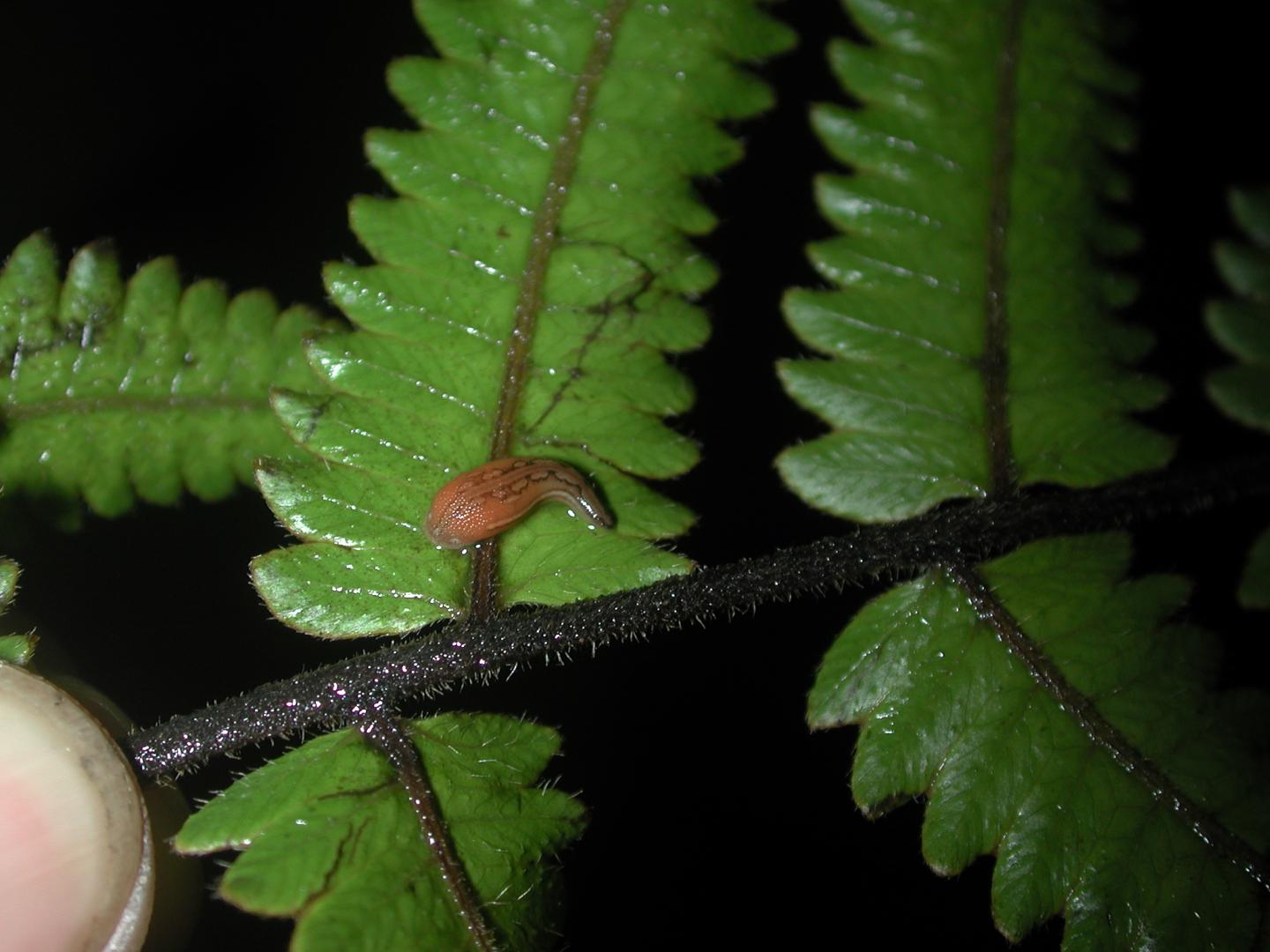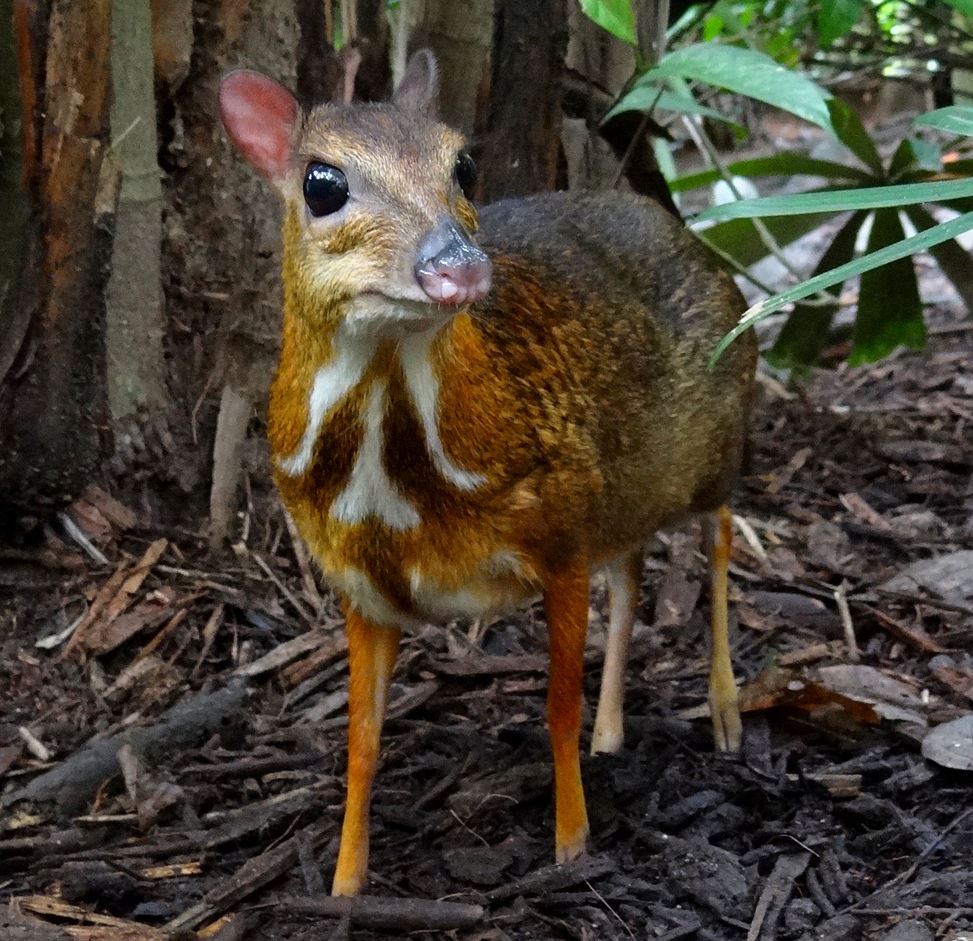- Scientists have identified mammals present at sites in Asia by examining the DNA in the blood sucked by leeches.
- They found that the nearly 750 Haemadipsa (blood-sucking) leeches stored the DNA of a diversity of other species, from mice to monkeys and birds, not to mention humans and domestic animals.
- Collecting terrestrial leeches is fast, cheap, and easy (they come to you!), and they feed on a broad spectrum of mammals, enabling them to serve as cost-effective tools for determining the presence of even scarce and elusive species.
The arduous task of assessing animal populations in the wild takes plenty of sweat and tears. Now a group of scientists is adding blood to that mix, in an innovative method that takes field surveying to a sanguine yet promising extreme.
The hero of this tale is the humble blood-sucking leech, an invertebrate that feeds off a wide range of animals, from birds to mammals to humans, and whose vampiric qualities led to their use in historic and some current medical treatments.
But where the blood drawn by leeches was once considered full of vile humors, now researchers see in it a treasure trove of DNA that sheds light on the animals that the leeches feed on.

Researchers from the American Museum of Natural History (AMNH), the University of Delaware, and Kunming Institute of Zoology in China/University of East Anglia in the U.K. have used genetic analyses to identify the animals preyed upon by a given parasitic leech in the remains of the leech’s most recent meals. Scientists can extract invertebrate-parasite-derived DNA (iDNA) of host mammals because leeches store blood meals inside them for several months after feeding.
Building on a 2012 pilot study of the use of iDNA methods to detect mammal presence at a site in Vietnam, the team tested the utility of leeches to assess Asian mammal communities across a broader range of geographic locations.

Lead author Michael Tessler, a postdoctoral fellow at AMNH’s Sackler Institute for Comparative Genomics, told Mongabay-Wildtech the 2012 investigation was “an absolutely pioneering study” that used around 25 leeches to screen for mammals in a concentrated area in Vietnam.
“Given the promising results of Schnell et al. [2012], we wanted to see if the method could be applied over much of the range of these terrestrial leeches (Haemadipsa),” Tessler said in an email. To accomplish this, the researchers analyzed the blood meals remaining inside nearly ~750 leeches from sites in Bangladesh, Cambodia, and China.
“We also took note of the leeches themselves to look for new species that had previously been overlooked,” Tessler said.
Haemadipsa (blood-sucking) leeches readily attack humans, so they are fast, cheap, and easy to collect. “It’s quick and easy to survey a park in this way, as you don’t really need to search for the leeches—they come to you looking for a meal,” Tessler said in a statement.

“A snapshot of the vertebrates in an area can be taken with just one day’s worth of sampling,” Tessler said. Using camera traps, the current standard for surveys, “takes months or longer,” he added.
The researchers then extracted and sequenced the samples of residual DNA from the collected leeches to determine to which host species they belonged. For this analysis, they used primers optimized for detecting mammal DNA.
An effective survey tool
The researchers found that the leeches fed on a unexpectedly broad range of species.
“What is most surprising and exciting is how generalized the leeches seem to be in their feeding across their ranges,” Tessler said. “This means they should be an excellent tool for surveying mammals both large and small, carnivore or herbivore, nocturnal or diurnal. As leech biologists, we were also shocked to find these leeches feeding on ground birds and even once on a bat, as these do not appear to be hosts commonly reported in the literature.”
This relatively fast and low-cost technique detected the presence of both the birds and various smaller-bodied mammals, such as rats, squirrels, civets, and tiny mouse deer, which can be difficult to capture with camera traps.

“Our recent work has demonstrated that we can determine what mammals are in a protected area without hunting, without trapping, without the use of scat or hair samples, and especially without camera traps-all of which are problematic methods for one reason or another,” co-author Mark Siddall, a curator at AMNH’s Division of Invertebrate Zoology, said in a statement.
Scientists are still exploring possible limitations of assessing mammal communities from the DNA in leeches. These could include leeches’ host specificity, habitat preferences, time lapse between collection and the leech’s last feeding, as well as possible DNA contamination in the analysis process.
The researchers also examined the genetic structure of the leech populations to identify possible prey specialists. They determined that the two described species of the Haemadipsa genus actually represent up to 15 different groupings, called clades, suggesting that future taxonomic work may distinguish additional species.

Some samples in this study lacked sufficient vertebrate DNA to be successfully sequenced. The methods, which are still being tested, may not be equally effective across all leech genera.
Nevertheless, the authors state in their paper: “While the leeches generally appear to prefer ground-dwelling species, no pattern was evident between leeches of a given clade and their prey.” In shorth, they say, the findings suggest “the iDNA technique may be robust for finding vertebrates in an area regardless of which leech species is reviewed.”
Analyzing mammal DNA from easy-to-collect leeches could save future mammal research teams time and money to survey the more elusive species found at a given site.
“As the method is focused on DNA, this type of study could easily sequence several genetic markers and study the population genetics of the mammals of conservation interest,” Tessler said. “This type of work usually requires actually trapping the mammal of interest, which is hard to do and incredibly stressful to the mammal, or finding fresh scat, which can be very difficult to find.”
Reference
Tessler, M., Weiskopf, S. R., Berniker, L., Hersch, R., Mccarthy, K. P., Yu, D. W., & Siddall, M. E. (2018). Bloodlines: mammals, leeches, and conservation in southern Asia. Systematics and Biodiversity, 1-9. https://doi.org/10.1080/14772000.2018.1433729
FEEDBACK: Use this form to send a message to the editor of this post. If you want to post a public comment, you can do that at the bottom of the page.